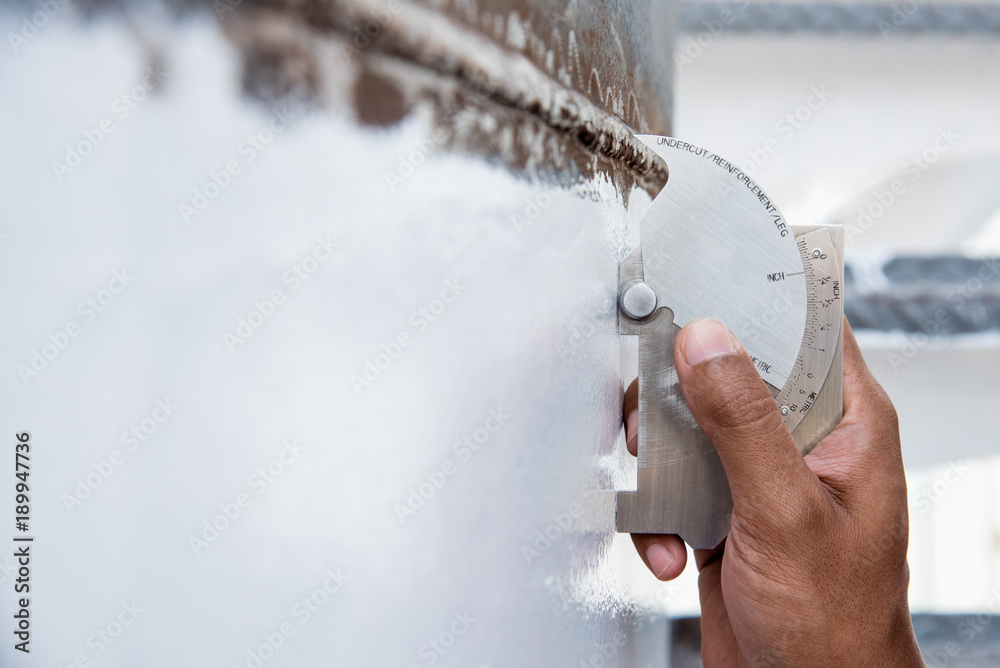How Tank Welding Inspection Protects Against Future Structural Failings
A Detailed Introduction of Storage Tank Welding Assessment Criteria and Methodologies for Improved Weld Top Quality and Efficiency
The importance of welding assessment criteria in the production of tanks can not be overstated, as they serve as the foundation for making certain weld stability and functional integrity. Various evaluation methods, including aesthetic evaluations and progressed non-destructive testing methods, are critical in determining possible flaws that might compromise performance.
Value of Welding Examination Specifications

Welding inspection criteria include a variety of standards, including material specs, welding treatments, and qualifications of workers entailed in the welding process. By implementing these standards, organizations can systematically determine and rectify prospective defects, consequently minimizing the chance of expensive repair services or tragic failures. Moreover, extensive assessment methods foster a culture of responsibility and accuracy, urging welders to maintain high degrees of craftsmanship.

Usual Welding Assessment Methods


Ultrasonic Checking (UT) is one more widespread technique, utilizing high-frequency acoustic waves to find internal flaws that may not be noticeable on the surface. This method is specifically effective for identifying gaps or additions within the weld steel. Magnetic Particle Testing (MT) is additionally widely made use of, especially for ferromagnetic products, as it reveals surface area and near-surface problems via the application of magnetic areas and ferrous particles.
Additionally, Liquid Penetrant Screening (PT) discovers surface-breaking problems by using a penetrant to the weld and afterwards using a designer to extract the penetrant. Each of these techniques contributes to a detailed inspection technique, making certain that welds meet the stringent high quality requirements called for in tank construction.
Regulatory Criteria and Conformity
Regulatory criteria and conformity are crucial elements in making certain the safety and security and integrity of welded frameworks in tank building - Tank Welding Inspection. These standards offer to develop minimum requirements for material residential properties, welding treatments, and evaluation methods, thus decreasing the threat of structural failings and enhancing overall efficiency
Secret companies, such as the American Society of Mechanical Engineers (ASME) and the American Welding Culture (AWS), offer guidelines that are extensively embraced in the market. Compliance with these criteria not only makes sure adherence to finest practices yet likewise satisfies lawful and legal responsibilities, safeguarding the passions of stakeholders.
Regulatory bodies often mandate adherence to certain codes, such as ASME Code Section IX for welding certifications and API 650 for welded tanks. These codes outline needs for welding strategies, credentials of personnel, and testing techniques to verify weld integrity.
Normal audits and inspections are crucial to keeping compliance, as they aid determine variances from established criteria. Non-compliance can lead to significant fines, project hold-ups, and security hazards. Hence, a robust understanding of governing requirements and a dedication to compliance are paramount in accomplishing top quality and sturdy welded container structures.
Non-Destructive Examining Methods
Exactly how can the integrity of welded frameworks be ensured without triggering damages? Non-destructive testing (NDT) methods offer a durable solution, making it possible for assessors to assess weld top quality without compromising the material - Tank Welding Inspection. Amongst the most typical NDT strategies are ultrasonic testing (UT), radiographic testing (RT), magnetic bit screening (MT), and dye penetrant testing (PT)
Radiographic testing entails passing X-rays or gamma rays with the weld, creating photos that expose architectural flaws such as splits or gaps. This approach is invaluable for evaluating the integrity of complicated welds.
Magnetic bit testing is suited for ferromagnetic materials, where electromagnetic fields reveal surface and near-surface gaps. Dye penetrant screening makes use of a fluid color to highlight surface-breaking problems, making it an efficient technique for non-porous materials.
Each of these my link NDT methods has distinct benefits, permitting for thorough analyses customized to certain materials and welding processes. By implementing these techniques, sectors can make certain the integrity and security of welded structures, inevitably improving general performance.
Enhancing Weld Quality Via Assessment
Efficient inspection plays a crucial duty in improving weld high quality, serving as an essential checkpoint in the construction process. More about the author By recognizing prospective defects early, examinations alleviate the risk of endangered structural integrity and make sure compliance with sector standards. Employing a mix of aesthetic evaluations, non-destructive screening (NDT) techniques, and mechanical assessments, examiners can identify concerns such as porosity, cracks, and incomplete fusion.
Implementing a durable inspection method not just enhances the total high quality of welds yet also cultivates a culture of responsibility amongst welders and producers. Normal training and certification of examination personnel make sure that they are equipped with the required abilities to identify and deal with possible problems successfully. This aggressive approach lessens rework and linked costs, eventually adding to predict efficiency.
Moreover, thorough documentation of evaluation searchings for provides valuable insights into repeating concerns, helping with continual improvement in welding methods. By leveraging sophisticated modern technologies, such as automated ultrasonic testing or electronic radiography, weld quality can be boosted through a lot more specific analyses. Finally, a rigorous assessment process is essential in accomplishing top quality welds, making sure security, dependability, and long life in container fabrication.
Conclusion
In verdict, the execution of strenuous container welding evaluation requirements and methods is important for making sure weld integrity and efficiency. By using a combination of aesthetic examinations, non-destructive testing techniques, and adherence to regulative standards, organizations can successfully recognize and mitigate prospective issues. Fostering a society of liability amongst welders have a peek at this site better improves the top quality of welding processes. Eventually, these practices add to lowered structural failures, reduced repair prices, and enhanced operational performance within the sector.